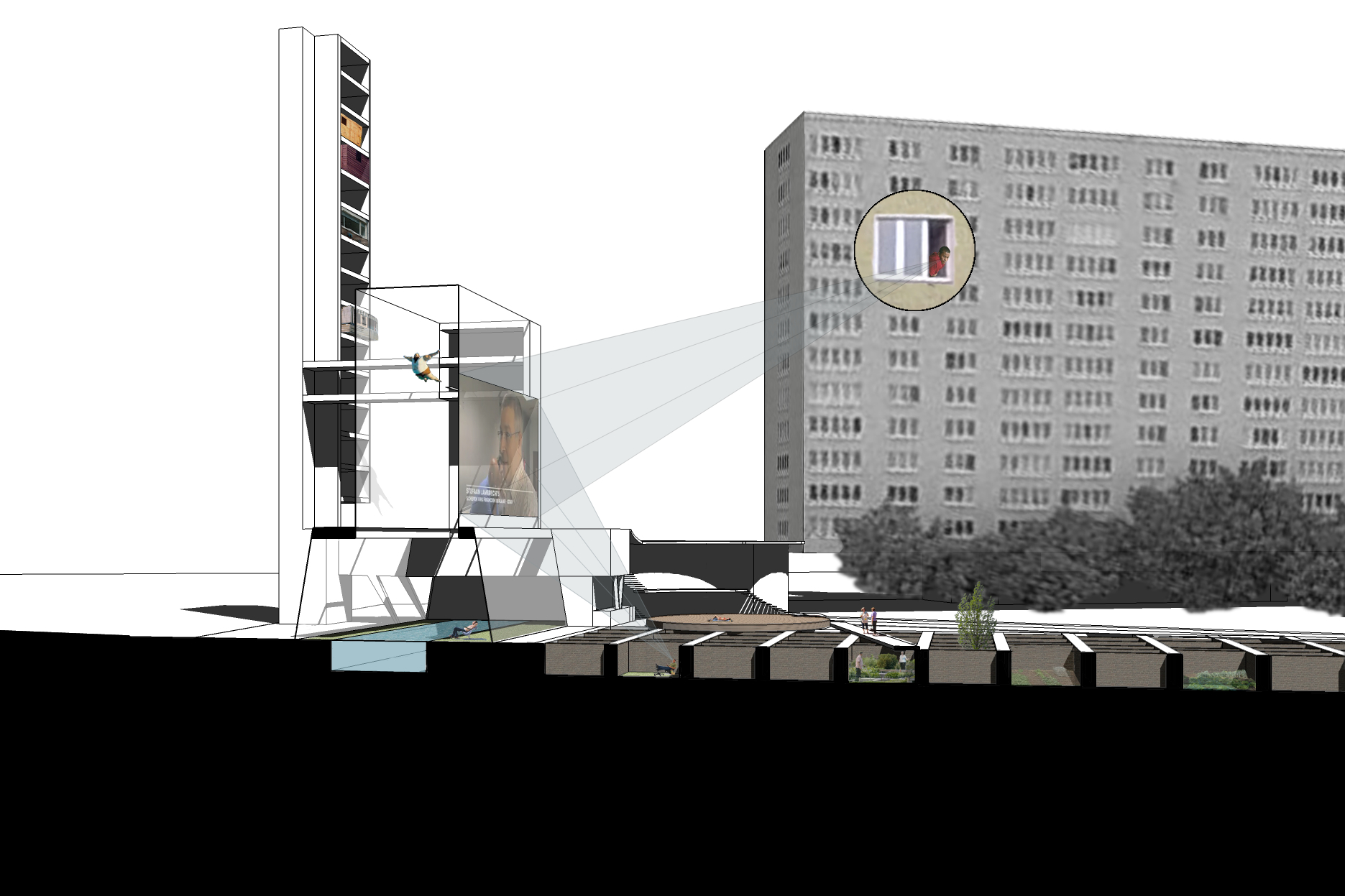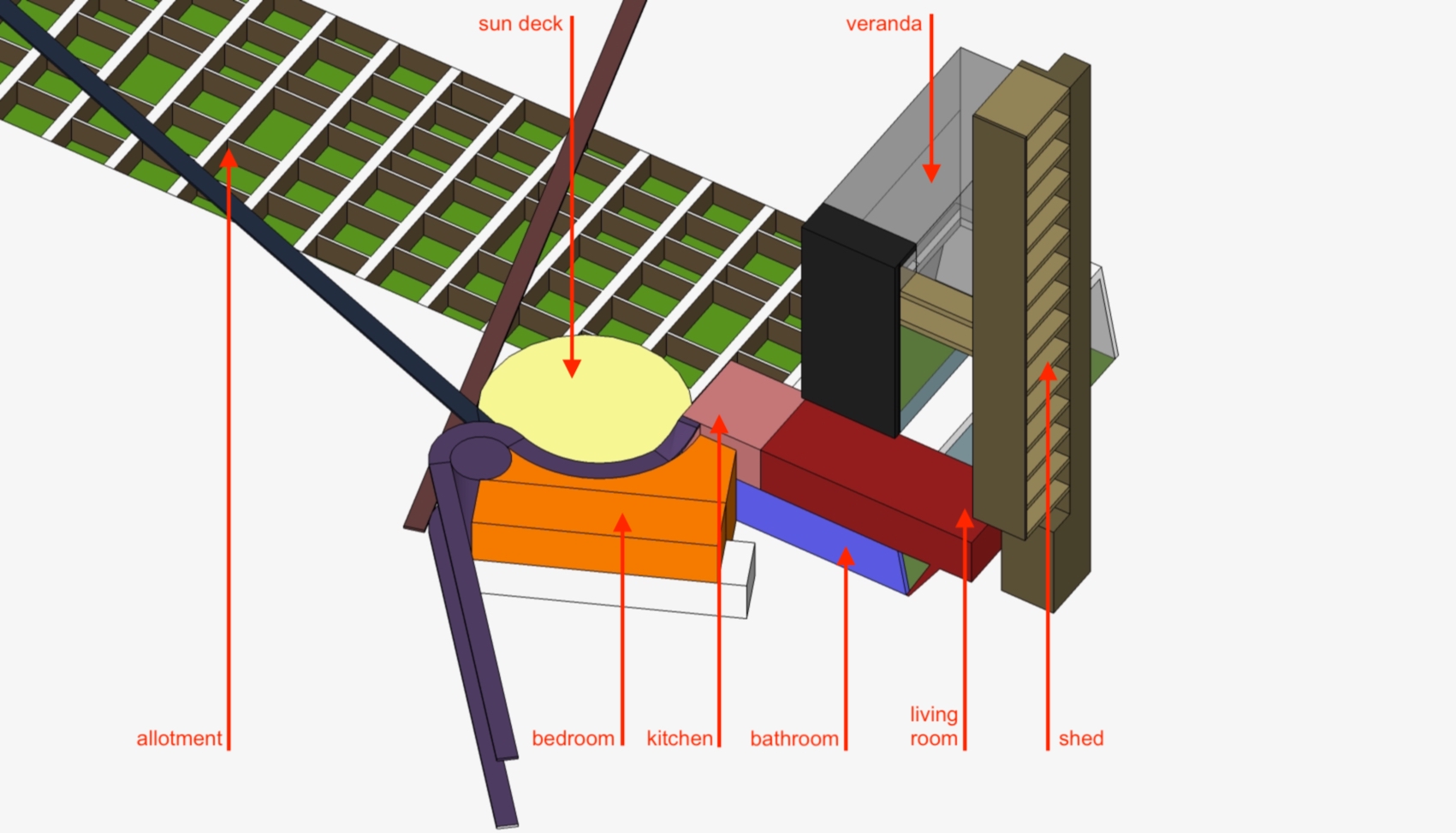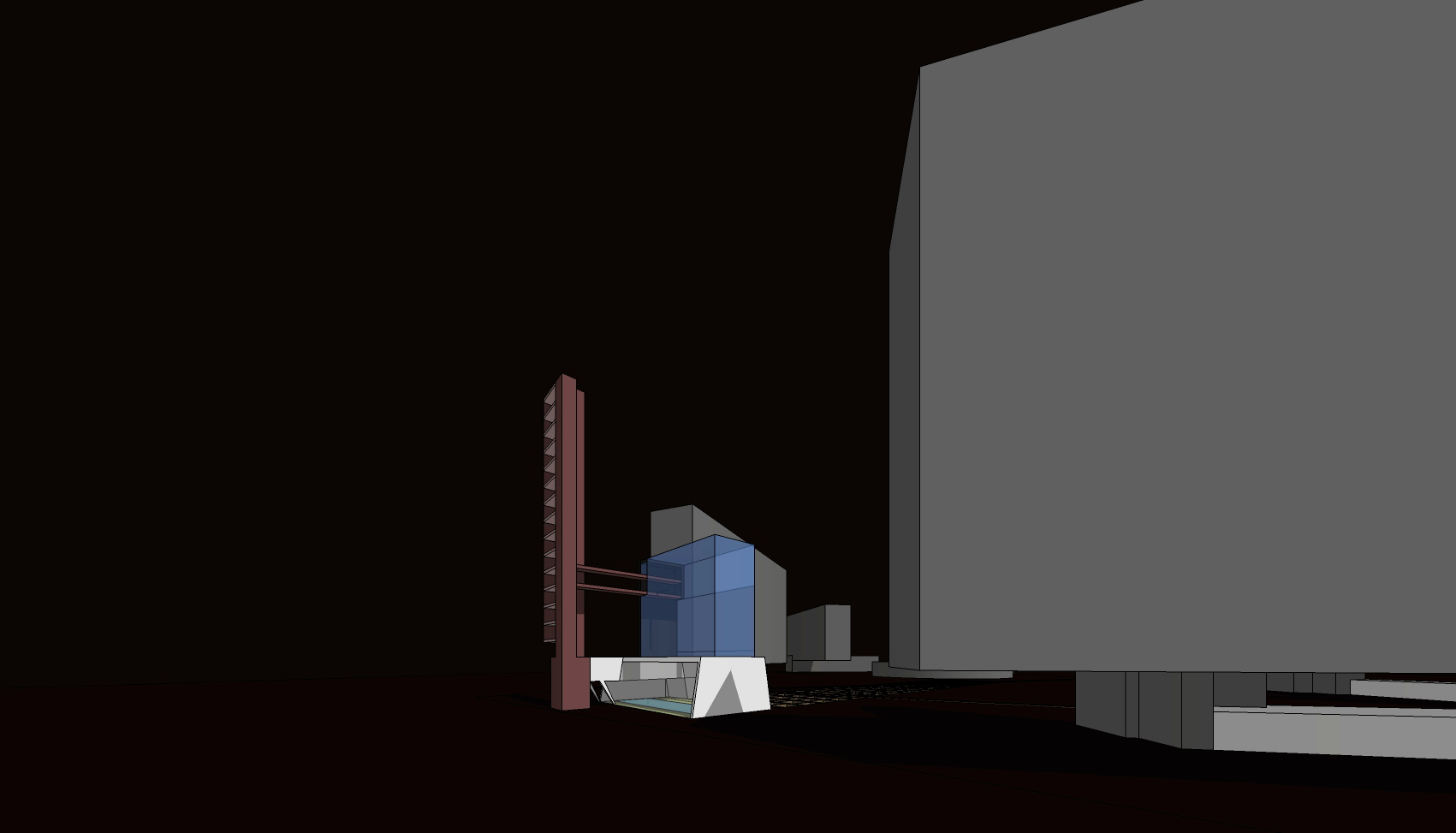typicalplan = planning |
||
UNE MACHINE A REVER. |
||
More than 50 years after its construction, the modernist architecture of the Kiel development has not lost any of its utopian power. But in light of today’s changing society, its original design principles must be re-considered in order for it to function optimally.
The proposed re-purposing of the former boiler room and director's residence is the perfect cause to provide an answer to the needs of contemporary residents. They could become the heart of a new hedonistic complex which both complements and safeguards the spartan purity of the neighbourhood.
The machine à habiter is enriched with a machine à rêver, where the creative desires and civic aspirations of the residents are realised. The rigorous socialist re-education vehicle conceived by architect Renaat Braem is complemented by a cheerful materialistic outgrowth.
A social condenser?
In the original modernist set-up the residents were to be socialised in the paternalistic educational way typical of the era. We propose a contemporary strategy to create a sense of community, based on a collective experiencing of the "petty-bourgeois sins". After all, in our fragmented consumer society, aren't we all increasingly connected by our exceedingly decadent material desires and ambitions, beyond all ideological divisions?
In the not so distant past the creation of pleasant shared space was deemed sufficient for like-minded people to meet and socialise in an evident, organic way. The residents now form a much more heterogeneous group and we propose that a sense of community can only arise as a by-product of shared experiences. The new complex focuses on the creation of these shared, but not necessarily collective, experiences.
As an ultimate tribute, this intervention hopes to be a contemporary interpretation of the "social center" which Braem always saw as an integral part of his public housing schemes but never saw realised.
“The unfulfilled material desires of the residents of the Kiel neighbourhood are realised inside and around the former boiler room. All activities that fall outside the remit of the efficient modernist plan find their expression here. The defining characteristics of the suburban Flemish dream house are reinterpreted as collective facilities of the public housing estate.”
A house fostering a new idea of community
All facilities can be booked by the inhabitants for their private use.
The living room: containing all the luxury essentials for the modern cocooner to entertain guests: a home cinema, design lounge, computer games room…
The kitchen: a fully equipped professional kitchen for cooking lessons and preparing elaborate meals for family feasts
The bedroom: hostel rooms to be booked by residents for temporary stays of visitors who cannot be accommodated in the apartment
The bathroom: wellness center with jacuzzi, sauna, gym...
The veranda: a greenhouse with swimming pool, diving tower and year-round tropical planting
The shed: a thin high-rise of stacked hobby and craft rooms which can not be accommodated in the apartments for acoustic or space constraint reasons
The allotment: private outdoor spaces that compensate for the lack of balconies, to be used as ornamental garden or vegetable patch
The sun deck: a terrace available for the local residents and their guests, connected to the "kitchen" and "living room"
type: submission for ideas competition “Renaat Braem 1910-2010” organised by Flemish Architecture Institute (VAi) and others
location: Antwerp, Belgium
year: 2010
architect: Hans Leo Maes / TypicalPlan





